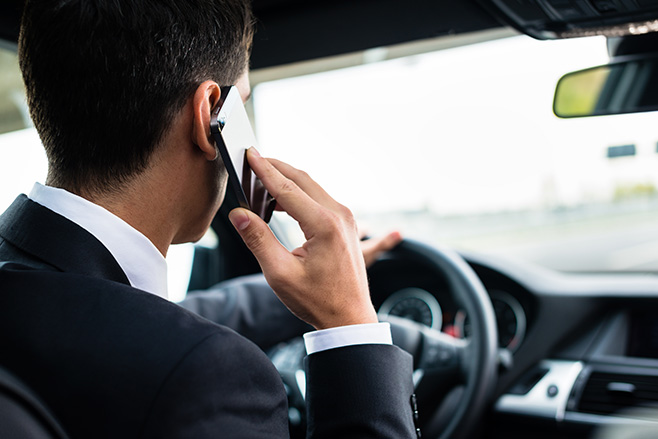
Driver distraction is a contributing factor in a quarter of crashes and near crashes on Australian roads. Using a mobile phone while driving is highly distracting, and it’s thought to increase your risk of a crash four times over — it’s no coincidence that a texting driver looks away from the road about four times more than a non-texting driver. Not to mention it’s illegal. But, we still do it — about one-third of drivers admit to texting and driving, and around two-thirds of those drivers were under 25.
While this guilty bit of lawbreaking seems innocent enough to some, scanning a text or tapping one out while driving is the equivalent to shutting your eyes for two to three seconds at a time, sometimes more. If you shut your eyes for just two seconds at 110km/h, you would have been flying blind for 60 metres.
Porsche teamed up with EX-F1 pilot and current Porsche works driver Mark Webber to find out what happens when you text while trying to navigate a racetrack.
So, if it’s not possible to read texts or reply and send them while driving, what are the alternatives? The obvious, safest option is still to pull over and stop the car to answer calls or return messages, or better still, wait until the journey has been completed. Of course, this is a luxury some of us on long hauls or rushing about town feel we cannot afford, and the temptation to answer and sneak in a quick text is but a finger away.
There are new technologies coming on to the market that can help, such as text-blocking devices, which could be released in Australia by the end of the year. For example, the Groove Jammer is an initiative gaining the support of the major telco’s, which connects the car to the Internet via a dongle in the ECU port (for vehicles built in the past 20 years). It then blocks incoming notifications, texts, and even calls on their mobile phones while the car is in operation, while allowing connected options such as GPS to still be operational. It could also have the added bonus of assisting with insurance premiums, as mobile phone distraction is high on insurance companies’ radar as a cause of bingles. But ultimately, it is still a self-regulating device. It isn’t too hard for us, or our children, to simply reach under the dash and pull the dongle out.
There are mobile apps that do the same job of blocking incoming messages and phone calls, and even reply to texts and mobile calls with a message saying you are on the road — another self-regulating exercise. The more refined driving apps assist the driver in staying connected with a form of text-to-speech, so messages are read aloud to the driver as they come in, and some give the option via voice command to respond back.

However, this is still a distraction from the road. Studies have proven that holding a conversation with a passenger in the car is still half as likely to cause the same distraction as a conversation over a mobile phone, predominantly because a passenger can assess driving situations and risks, and pause the chat as the driver focuses on the road ahead. While you can tell a person on the end of the line to pause the conversation, a machine or program may not (ever tried to interrupt Siri or S-Voice?).
In the past decade, we have seen the development and release of inbuilt internet in the cars themselves. These early offerings from Audi, Fiat/Chrysler and GM turn the car into a rolling wireless hotspot with the aim of connecting not just the phone, tablet or computer (for the passengers!), but to offer live traffic information, update the car software remotely, and other nifty initiatives. Text messages can be dictated as they come in, and sent the same way. But while it is ‘hands-free’ texting, it is still taking some modicum of focus away from the road.
Full circle on this topic of conversation is this: while technology can assist us to stay connected and stay focused while driving, it is still better to be as free of distraction as possible, and sometimes this means turning off the tech and keeping the hands free to hold the wheel… and nothing else.



